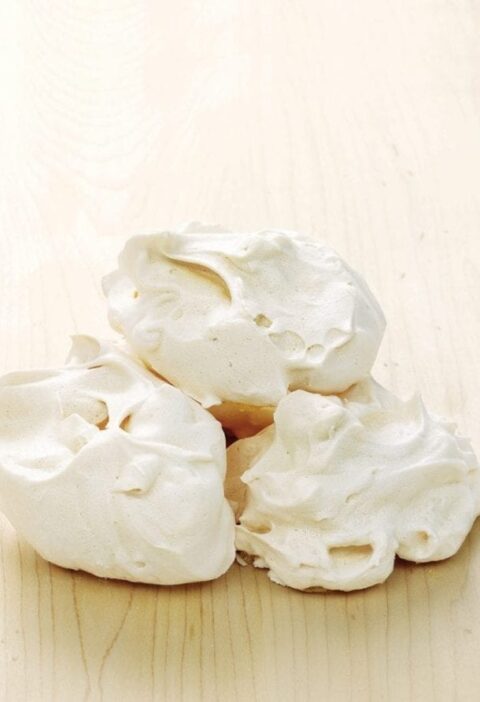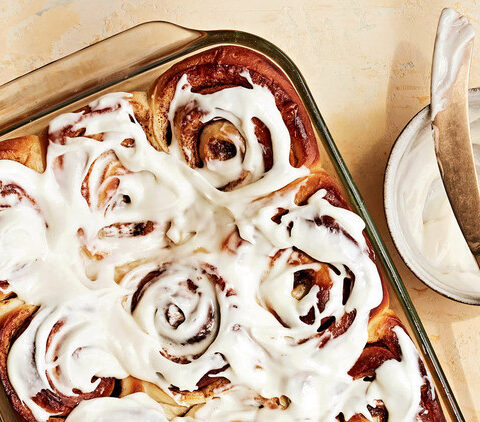Common ingredients in baking recipes can have a variety of different functions depending on the type of good being made. As you continue to read, you will learn more about the scientific breakdown of the ingredients used in this cookie recipe.
Analysis of the Dry Ingredients:
white sugar – this sugar is medium-sized white sucrose crystals. Its role in the recipe was to provide slight sweetness (in flavor), increase the browning on the edges of the cookie (in chemistry known as Maillard browning), and to help make the cookies tender/chewy due to sucrose’s tendency to hold onto moisture.
brown sugar – this type of sugar used is white sucrose crystals that are coated with a layer of molasses or dark syrup. In the recipe, its role was to provide strong sweetness (in flavor) and help retain the moisture in the cookies; brown sugar retains moisture better than white sugar because of the presence of molasses, so these cookies resulted in a very chewy texture due to both sugars retaining moisture well. It also served as the acidic ingredient for baking soda, which is discussed later.
almond flour – this type of flour is known to be lighter in texture than all-purpose flour and provides a noticeable nutty flavor.1 It has a low carbohydrate content while supplying a large number of proteins, making it a common healthy alternative in baking; it additionally yields Vitamin E, healthy fats, and fiber.2 Its most significant role in this recipe is to provide structure through protein coagulation due to almond flour being gluten free. It is also able to hold moisture due to its high absorption level, so baked goods won’t dry out as fast as they would with other flours.
coconut flour – this type of flour is much more dense and drier than all-purpose flour and provides hints of coconut flavoring (but not in strong amounts).3 This flour comes from coconut flesh that has been dried and ground, giving the flour a slight gritty texture. It is a good supplier for manganese, and it is also abundant with various saturated fats, protein, and high fiber content.4 Like almond flour, its role in the recipe was to provide structure to the cookies, but coconut flour almost always needs an egg in the recipe to bind its agents together to create that necessary structure. Since this flour comes from only coconuts, it does provide some sweet coconut flavoring to the recipe.
baking soda – this ingredient’s most common use is to act as a leavening agent that provides lift to the recipe, sometimes referred to as a lifter. Since the cookies are gluten-free, I needed a leavening agent that would help raise the cookies. Since baking soda is an alkaline compound, it needs an acid that it can react with to produce carbon dioxide gas. The molasses in brown sugar can act as an acidic catalyst for the baking soda to activate due to the acetic acid that is found in molasses; once the baking soda has been activated by an acidic ingredient, it produces the carbon dioxide gas that creates bubbles in the dough that come trapped, forcing the dough to rise.
room temperature butter – butter can have a number of different uses, but its main roles in this recipe were to help leaven the cookies (as a leavening agent) and to help tenderize the cookies. Room temperature butter is overall soft (but still solid) and easy to work with; the recipe called for the butter to be blended with the sugars until smooth, which means that the butter was being creamed. The mechanical process of creaming the butter allowed for additional rise to be added to the recipe, as discussed later. Additionally, butter is able coat the flour particles, which creates tenderness and some flakiness in the cookie; the butter mainly prevents the flours from retaining as much liquid as they normally and from binding into a strong structure, of which creates a chewy texture rather than hard. The butter can also wedge between layers of dough prior to baking, which would then evaporate in the oven and create air pockets in the good. This doesn’t just add more leavening, but also a crumbly aspect to the cookies that still retain their chewiness.
white chocolate chips – this was mixed in when the dough was ready to add the contrasting, smooth chocolate flavor.
chopped macadamia nuts – this was also mixed in when the dough was ready to add a stronger nutty flavor in combination with the almond and coconut flours.
cranberries – this was also mixed in when the dough was ready to add the fruity flavor that sticks out but compliments the nutty flavor from the other add-ins.
Analysis of Wet Ingredients:
boiling water – the role of the boiling water was for the cranberries to be rehydrated. The mixture of the boiling water and sugar allowed for the sucrose crystals in the sugar to bond with the water molecules to effectively sweeten the cranberries.
vanilla extract – in the recipe, its only role was to add intense flavor to the cookies.
large egg – though eggs are one of the common ingredients that have the most versatile uses in baking, this recipe only used it for structure building and leavening purposes. Eggs bring a lot of liquid to the recipe due to egg whites being 88% water while egg yolks are 50% water. In addition to brining some protein to the recipe, egg whites also bring a substantial amount of fat. In this recipe, the flours absorb the liquids from the egg, causing the starch granules to swell and form the structure of the cookies. As for the leavening, it comes from the liquid in the egg and the proteins. The exceptional moisture from the egg’s liquid gets converted to steam in the oven, creating gas bubbles that give quality rise to the cookies; it is such a strong leaven that “just one part liquid explodes into 1,600 parts steam.”5 As for the proteins in the egg, they begin to unwind and stretch when the eggs are beaten in a recipe. The process of beating the egg makes it foam and significantly expands its volume; the beaten egg is able to hold tons of air bubbles that became trapped from the film that was created from the denatured proteins. The plethora of air bubbles is what also adds rise to the cookies.
As I had stated previously, what seems like simple steps is actually a specific result of a scientific event taking place. It’s not just the ingredients that play a role in determining your cookie outcome, but the hidden chemistry behind the mechanics too!
The Science Behind the Processes:
Order of Ingredients
The method and chronological order of combining ingredients in a recipe can significantly impact the results. In this recipe, following the order of the steps is vital to creating the chewy, soft cookie everyone loves. The main step was to combine the sugars and butter together in their respective bowl. The process of creaming butter is essential to giving the cookies lift. As the sucrose crystals use their jagged surfaces to dig into the butter when beaten together, tiny air pockets form that remain trapped in fat; a rule of thumb is the smaller the crystals are, the more air pockets you will have. The creaming process adds volume to the dough and the air pockets needed to make the cookie rise. The egg and vanilla extract needed to be beat in after so it wouldn’t interfere with the creaming. The flours and baking soda were then combined in another bowl mainly for distribution purposes. Since the baking soda is the leavening agent in the recipe, we needed to make sure that it was thoroughly dispersed through the flour before added to the sugar mix that has the molasses activator. The cranberry mixture, white chocolate chips, and chopped macadamia nuts were added last because their only purpose was for additional flavors to the cookie, so there was no reason to have them impede the other processes and get potentially damaged.
Equipment Used
The most important materials in this recipe are the mixing bowls and cookie sheets. As discussed above, it is necessary to separate the mixing processes of the ingredients until the recipe specifies to combine them since some ingredients would trigger the science too early. This recipe uses cookie sheets and parchment paper due to the type of cookie being made. In our modern times, they make a variety of cookie molds and trays that can be used in the oven, but regular cookie sheets need to be used in this recipe because of their size and shape. Though some of the silicone cookie molds and cookie cutters can be fun, they are difficult to work with to get the end result you desire. Regular cookie sheets allow for the convection currents in the oven to travel to the middle of the food, heating it uniformly. Additionally, cookie sheets have an open, rectangular shape that not only allows for many cookies to fit on one tray but also covers surface area easily. The more surface area exposed, the faster and better it will cook. Since these cookies don’t have gluten formation and are relatively small, the cookie sheets are a perfect choice for quick and efficient cooking. This also explains the short baking time that these cookies have.
Temperature
At every temperature stage, there is a different response to the increase in temperature. The first stage is room temperature which typically hovers around 68°F (20°C); at this temperature, baking soda and baking powder can react to release the carbon dioxide gas, although some of them also need heat to truly activate the reaction (or second reaction in some cases), and butter begins to soften. Around 90–95°F (32–35°C), fats will melt, in our case the butter will melt and release any trapped air or water that will evaporate to a gas. Once temperature hits 140°F (60°C), eggs will start to “dry out, stiffen, and set” while the starch granules begin to swell and gelatinize (and continue to do so as temperature rises).6 Starch gelatinization is when the bonds from intermolecular forces of starch molecules break down in the presence of water and heat, allowing for it to absorb and hold water. At 140 – 180°F (60-82.2°c), protein enzymes become denatured after heat has destroyed their native structure; this stops the proteins from breaking down and digesting our cookies. From here, we reach one of the most beloved temperatures in the baking world. Maillard browning starts to occur at 250°F (121.1°C); this browning process begins with the reaction between an amino acid and a carbohydrate and gives us the golden
color and cooked texture in our cookies. Additionally, caramelization will occur at 320°-356°F (160-180°C), depending on the sugar molecule; caramelization is when sugar is heated until the covalent bonds are broken. This process can also contribute to the browning of our cookies but is largely responsible for creating new flavors that are the staple of our cookies, such as the nutty and sweet flavors. Our cookies go all the way up to 375ºF (190.5ºC) so they can keep a short baking time. The short time in the oven allows for them to brown quickly on the edges and bottom but still maintain the chewy interior since we do not want a crunchy cookie.
Key Phrases:
sucrose, protein, leavening agent, carbon dioxide gas, creaming, bind, starch gelatinization, Maillard browning, caramelization
_____________________________________________________________________________________________
- Harris, R. Rise and Bind: Substituting binders and flours in pancakes. https://teachers.yale.edu/curriculum/viewer/initiative_17.04.06_u (accessed May 4, 2022).
- Geiger, M. Meet the Flours – Alternative Flours. Iowa State University Extension and Outreach. https://blogs.extension.iastate.edu/answerline/2021/12/07/meet-the-flours-alternative-flours/ (accessed May 4, 2022).
- See reference 2
- See reference 2
- Gardiner, A.; Wilson, S. Science of Cooking: The Amazing Multi-Tasking Egg. https://www.exploratorium.edu/cooking/icooks/article_5- 03.html?msclkid=3a6839dabc3b11ec8cd1a18c3d78c1d4 (accessed May 4, 2022).
- Lawandi, J. What’s So Special About 350oF? https://www.thekitchn.com/whats-so-special-about-350-f-food-science-217960 (accessed 2022 -05 -04).

